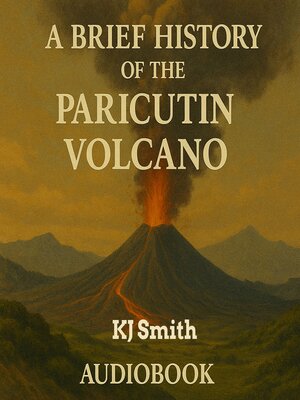A Brief History of Paricutin Volcano
audiobook (Unabridged) ∣ A Brief History of--Wonders of the World
By KJ Smith

Sign up to save your library
With an OverDrive account, you can save your favorite libraries for at-a-glance information about availability. Find out more about OverDrive accounts.
Find this title in Libby, the library reading app by OverDrive.



Search for a digital library with this title
Title found at these libraries:
| Library Name | Distance |
|---|---|
| Loading... |
This audiobook is narrated by a digital voice.
A Brief History of Paricutin Volcano
On February 20, 1943, Mexican farmer Dionisio Pulido was working his cornfield near the village of Paricutín in Michoacán when the earth began to crack and smoke beneath his feet. Within hours, a volcanic cone emerged from what had been flat farmland, marking the birth of one of geology's most extraordinary phenomena—a volcano witnessed from its very first moments. This remarkable chronicle follows Paricutín's explosive nine-year life cycle, during which it grew to over 1,300 feet in height, buried two entire villages under rivers of lava and volcanic ash, and displaced thousands of indigenous Purépecha people from their ancestral homes. Through eyewitness accounts, scientific observations, and stunning photography, the book captures both the terror and wonder of watching a mountain literally rise from the earth.
Paricutín became far more than a geological curiosity; it transformed our understanding of volcanic birth and provided scientists with an unprecedented opportunity to study a volcano's complete life cycle from beginning to end. This fascinating account explores how international teams of geologists, photographers, and filmmakers flocked to witness this "laboratory volcano," how the displaced communities struggled to rebuild their lives while their sacred sites disappeared beneath molten rock, and how Paricutín's legacy continues to influence volcanic research today. A Brief History of Paricutín Volcano reveals how this remarkable mountain—which ceased activity as suddenly as it began in 1952—became both a scientific treasure and a powerful reminder of nature's capacity to reshape the world in the span of a human lifetime.







